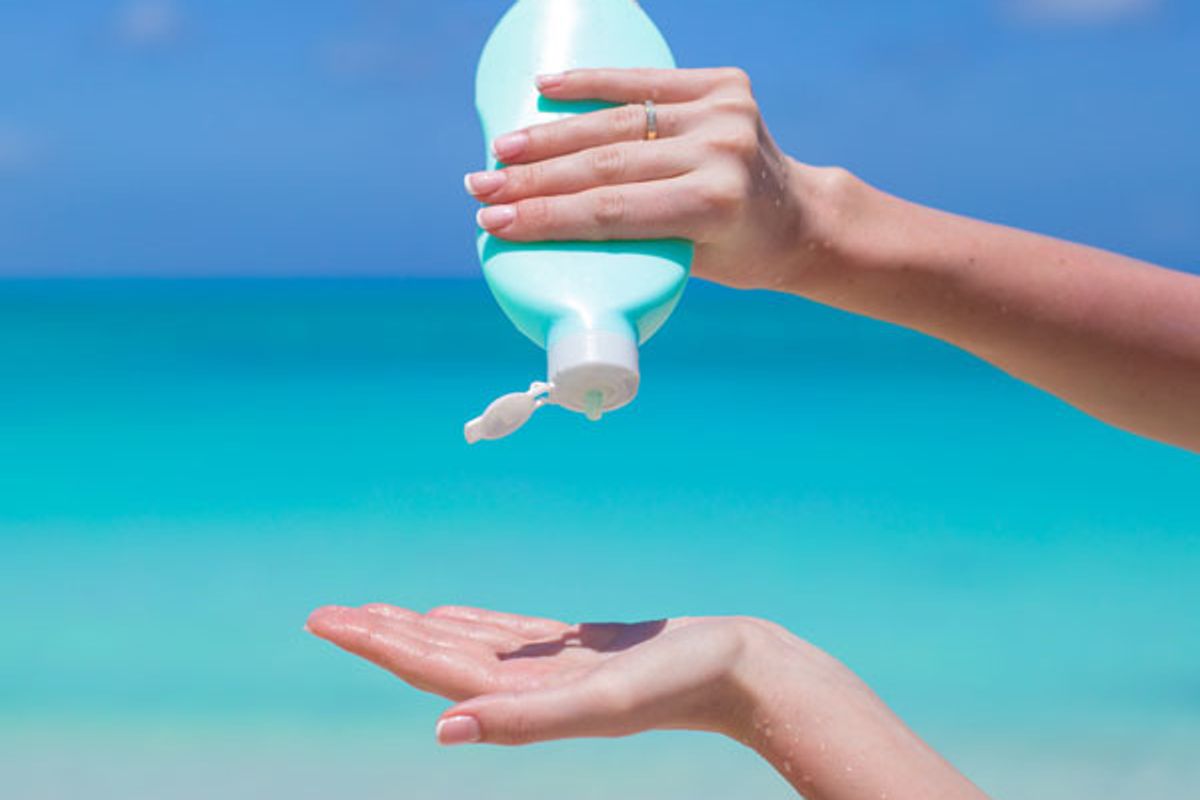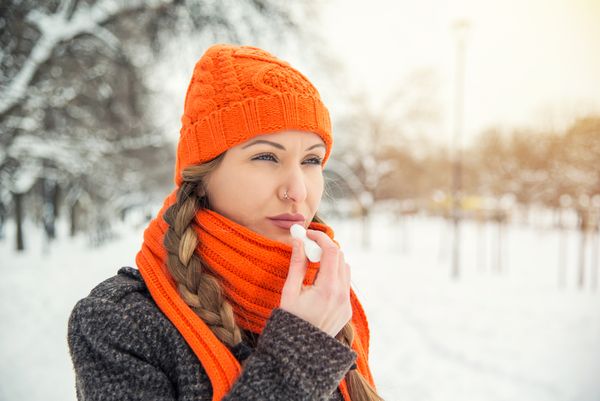If you want to drastically cut your risk of developing melanoma, the most dangerous form of skin cancer, then you have to use sunscreen, plain and simple.
But is it always that simple? It can be, but many people are making major mistakes when it comes to protecting themselves from the sun's dangerous UVA and UVB rays.
With summer comes longer days with more intense sunlight, making proper protection even more imperative. Research in Australia finds that a daily application of SPF-15 (or higher) sunscreen to the head, neck, arms and hands can reduce melanoma incidence by half.
Your skin—your body's largest and fastest-growing organ—does so much for you; now it's time for you to return the favor.
1. SUNSCREEN OOPS: "I only need a little."
Because most people do not apply enough, the actual SPF can be as low as one-third of the labeled value of the sunscreen. The average person needs the amount of sunscreen that would fill a shot glass (one ounce, or the equivalent of about two tablespoons); you need a nickel-sized dollop just for your face alone.
2. SUNSCREEN OOPS: "I'll wait until I get settled on the beach; then I'll apply my sunscreen."
Because it takes about 15 minutes for your skin to absorb the sunscreen, you need to apply itbefore you venture out; otherwise, your skin will be unprotected in those first few moments and can burn.
3. SUNSCREEN OOPS: "What sun?"
It may look cloudy or overcast, but don't let that fool you. The sun's damaging rays are stubborn and can pass through clouds. Fact: Up to 40 percent of the sun's ultraviolet (UV) rays reach the earth on a completely cloudy day.
4. SUNSCREEN OOPS: "I'm fine if I sit under the umbrella or in the shade."
While it's true that shade is valuable in protecting you from the sun, that doesn't mean it is totally protective. UVB rays—thought to be the most harmful part of sunlight—can still reach your skin indirectly. The light, which has been scattered by the clouds and other elements in the atmosphere, can bounce back from surfaces that reflect it, like dry sand or concrete.
5. SUNSCREEN OOPS: "If I wear a hat, I don't need to put sunscreen on my face."
Hats can offer protection, but they're usually too small to totally shade the most vulnerable areas like the nose, ears and neck. Compared with other parts of the body, skin cancers disproportionately occur on the head. At particular risk is the nose and, for men, the ears. The ideal hat is one with a broad brim all around or one that is angled downward, with a brim at least three inches wide.
6. SUNSCREEN OOPS: "My skin tone is dark and I never burn, so I don't need sunscreen."
Everyone can get skin cancer, no matter what the skin color (although it is more common among lighter-skinned people). Even though you have dark(er) skin, you can still develop skin cancer from the sun's UV rays.In fact, certain skin cancers can be caused by factors other than UV and can occur on parts of the body that are rarely in the sun. Because many people think darker-skinned people are immune from getting skin cancer, diagnosis is often delayed, which can result in a poorer outcome.
7. SUNCREEN OOPS: "I used waterproof (or sweat-proof) sunscreen, so I don't need to reapply it after swimming or sports."
It doesn't matter. According to the Skin Cancer Foundation, all sunscreen—regardless of their claim of being waterproof or sweat-proof—should be reapplied every two hours, or immediately after swimming, toweling off or sweating a great deal. Make sure your sunscreen has broad-spectrum protection to protect against both UVA and UVB ranges of light; most broad-spectrum formulas contain multiple ingredients.
8. SUNSCREEN OOPS: "I wear a makeup with an SPF; that's enough to protect my face."
If you're going to be in the sun for a short time (like when you're running errands and in and out of the car), you should be OK. But if you work outdoors or plan to spend more time in the sun, you should wear a stronger sunscreen that is water-resistant and will stay on your skin.
9. SUNSCREEN OOPS: "I can use old sunscreen."
Sunscreens are designed to remain active, at their original strength, for about three years. If the sunscreen is past its expiration date, dump it. (If you're using it correctly, you shouldn't have any leftovers in the first place!) If there's no expiration date on the tube or bottle, use a permanent marker to jot down the date you purchased it so there's no question about when it was opened.
10. SUNSCREEN OOPS: "I don't need to worry about my lips."
Your lips are vulnerable to the sun's damaging rays, just like the rest of your skin. That said, you might not want to use the same sunscreen you're using on your body, which can taste funny and not adhere well. Instead, use a lip balm with SPF and apply it more frequently than you would a sunscreen for your body, because things like eating, drinking and even talking will make it last a shorter time.
For more reading:
Why Using Sunscreen Is Not Enough
The Place You're Probably Forgetting to Put Sunscreen
Skin Health Comprehensive Guide







